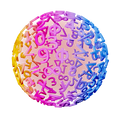11th Grade Q1
What Are Time Diagrams for Annuities?
A time diagram is a visual representation of the cash flows in an annuity. It shows how payments and interest occur over time on a timeline. These diagrams are helpful for understanding the timing and value of payments and for solving problems related to annuities.
Key Components of a Time Diagram

- Timeline: A straight line marked with intervals (e.g., months, years) to represent the time period.
- Payments: To show regular payments (outflows) or deposits (inflows). The amount is written next to each period tick.
- Future or Present Values: Arrows connect payments with future values at a given time period under the corresponding point on the timeline, or with the present values.
Example: Time Diagram for a Simple Annuity
Suppose you deposit $100 every year for 3 years into an account earning 5% annual interest. The future value (FV) is calculated at the end of 3 years.
- Year 0: Start with no money (0).
- Year 1: Deposit
- Year 2: Deposit 100 and the first deposit earns interest.
- Year 3: Deposit $100; previous deposits earn more interest.
The diagram looks like this:

At the end of 3 years, the future value (FV) includes all the payments plus the interest.
Example: Time Diagram for a General Annuity
Suppose you deposit $200 every 6 months for 2 years into an account earning 8% annual interest, compounded quarterly. The future value (FV) is calculated at the end of 2 years.
To create the time diagram in this case, you need to first determine the effective interest rate per a payment period. In other words, the effective interest rate for each 6 month period.
Calculation
Imagine you have an initial deposit . In this example it experiences compound interest of every quarter, which is every 3 months. There are 3-month periods in 6 months. So the final amount after 6 months is given by
Under the effective interest rate (), the same final amount is reached after one 6-month period. So
This means
so, canceling the terms we are left with
So the effective interest per each 6-month period, , is .
Time Diagram
We can now create the time diagram:

The diagram allows us to systematically calculate the value after 2 years, which is $840.80.
Why Use Time Diagrams?
- Visual Aid: Helps you see how payments and interest grow over time.
- Simplifies Problems: Makes it easier to solve annuity problems, especially for understanding the timing of payments.
- Tool for Formulas: Connects the timeline to formulas for calculating present or future value.




















